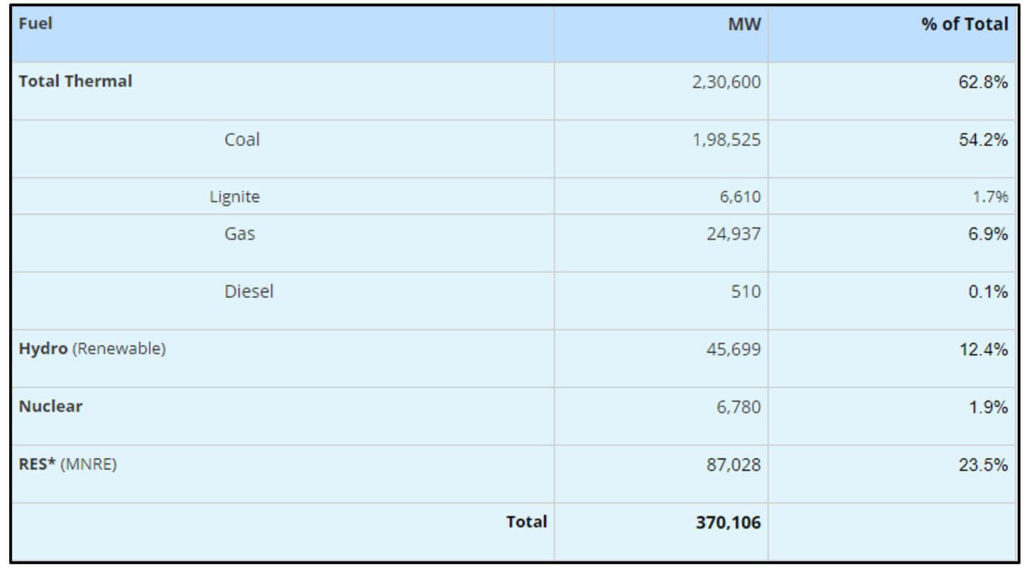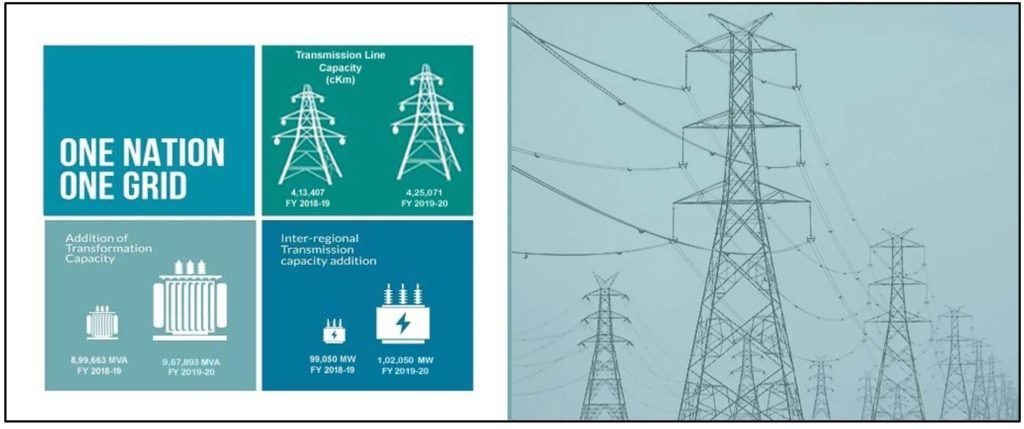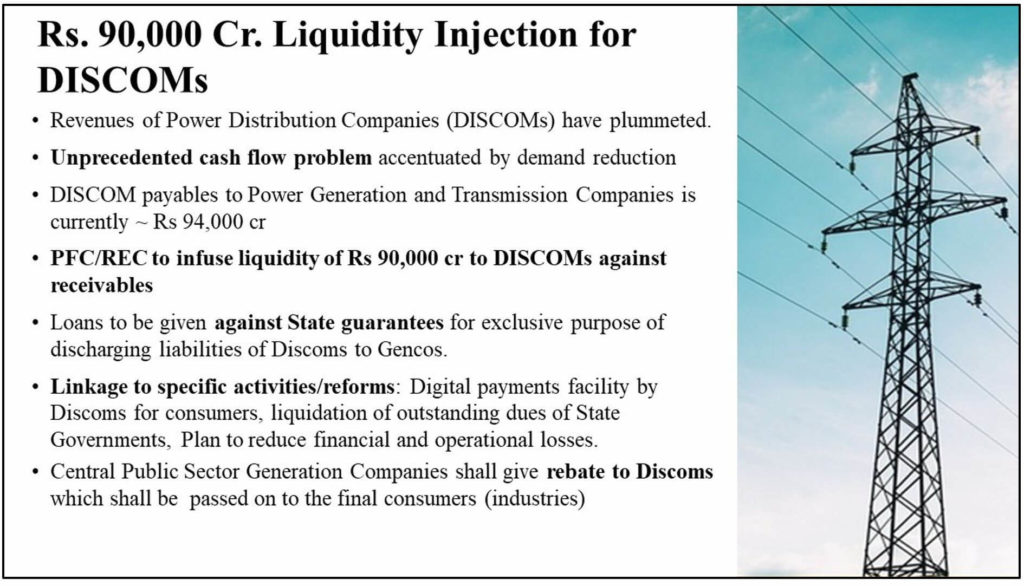The Government of India has circulated the draft ‘Electricity Amendment Bill, 2020’ for stakeholder comments. Certain provisions of the bill have been criticized by state governments. What are these provisions? Here is an explainer.
The Ministry of Power circulated the draft Electricity Amendment Bill, 2020 on 17 April 2020 and sought stakeholder comments. This comes at a time when the entire nation is grappling with COVID-19. Following the requests of stakeholders, the final date for submission of comments has been extended to 05 June 2020. Many states have opposed the bill citing it to be ‘draconian’, including Telangana.
India became the third largest generator of electricity in the world
The power sector is vital for any country’s economic development. Along with urbanization and industrialization, the demand for power in the country is only expected to grow. Thermal energy has been the primary source of fuel for power generation in the country, accounting for almost two-thirds of the total installed power capacity, followed by renewable energy sources such as small hydro project, wind and solar energy. Between fiscal year 2006 and 2018, India’s installed capacity for power generation witnessed a compound annual growth rate of 8.9%- an increase from 124 GW to 344 GW, making India the third largest generator of electricity in the world as per a NITI Aayog report.

Electricity Act 2003 is a consolidated version of older laws related to generation, transmission, and distribution
The current amendment bill seeks to make crucial changes to the Electricity Act of 2003, which covers laws pertaining to the generation of electricity, its transmission, distribution, trading, and usage, in addition to the development of the electricity sector. The 2003 Act is a consolidated version of older laws such as the Indian Electricity Act 1910, the Electricity Supply Act, 1948, and the Electricity Regulatory Commissions Act 1998. Since the enactment of the 2003 Act, direct investments were made, public private partnerships were introduced in the sector, and transparent tariff mechanisms were followed. In short, the Act brought about with it, structural, operational, and financial reforms. However, these reforms have not been fully effective.
DISCOMs face many challenges resulting in their poor financial health
The power sector in India faces many challenges. DISCOMs, or Distribution Companies, have mounting losses. Their accumulated losses- ‘Average Technical and Commercial losses’, are on a rise, according to NITI Aayog’s study on power distribution in India in 2019. This is because of power theft, and inefficient payment collection procedures in place. As losses increase, some state owned DISCOMs are dependent on loans for their functioning. Thus, the interest cost and loans together increase the burden of the DISCOMs thereby resulting in greater financial problems, which may result in their reduced ability to buy power. Even their efforts to supply electricity to the rural areas are hampered. Ultimately, the poor financial health of DISCOMs can also take a toll on investments in the sector.
Even the insufficient tariff hikes and delay in revision have been cited as reasons for the woes of DISCOMs. Some other major issues faced by the power sector include poor operational performances, and the inadequate improvement in cross-subsidy levels.
GoI’s version – Electricity Amendment Bill to uplift the commercial & investment activities
What calls for the amendment, as mentioned in the bill, are the critical issues which have significantly affected the commercial and investment activities in the sector. Further, it has also been mentioned that some provisions of the existing act were unable to cope up with the rapid development of electricity sector. The bill was first introduced in the Lok Sabha in December 2014 , the year in which the Narendra Modi led NDA government was first formed. But the bill lapsed after dissolution of Lok Sabha in 2019. The draft was later circulated for stakeholder consultation in 2018 as well.

Following the abrogation of Article 370, the draft bill extends the provisions to Jammu and Kashmir also, which have been excluded in the current legislation.
Cross subsidy to be removed and consumers will be paid subsidy through DBT
Currently, states collect power tariff factoring cross subsidy. The bill provides for Commissions to determine tariffs that are reflective of cost, so that DISCOMs can recover their cost. The Commissions will determine the tariff without considering subsidy, as per the draft provisions of the amendment bill. The government shall then transfer the subsidy to consumers through Direct Benefit Transfer (DBT), like in the case of LPG. This means that consumers will have to pay the whole amount first. The immediate impact of removing these subsidies could be on farmers in states like Telangana who currently get free electricity. Consumers who avail subsidies in states like Delhi could also be affected.

A new category of licensee, distribution sub-licensee or franchisees, has been introduced under distribution licensee, as a person who has been authorized by distribution licensee to distribute electricity on its behalf. For instance, the outsourced agencies DISCOMs use for billing, meter reading, and more in an area or city, may fall in this category. DISCOMs may have more independence in introducing private players as sub-licensees. Promoting the use of renewable sources of energy for producing electricity has also been considered in the bill.
Further, cross border trade has been given prominence under the bill by giving it a statutory status. Load dispatch centers will have to monitor payment security mechanism before scheduling dispatch of electricity as per contracts.
ECEA to be established for dealing with cases of contract enforcement
The draft amendment bill proposes the establishment of Electricity Contract Enforcement Authority (ECEA) – a separate body to exclusively investigate cases of contract enforcement between generation, distribution or transmission companies or licensees. It would be headed by a retired High Court Judge and would be given the powers of civil court. However, ECEA’s status will be lesser than that of the Appellate Tribunal for Electricity, APTEL. APTEL has the powers and authority as a High Court.
Multiple committees for selection to various posts in commissions and APTEL have been proposed to be replaced by a single selection committee. It has also been proposed to have uniform qualifications for appointments of Chairperson and Members of Central and State Commissions since the responsibilities assigned to them are similar.
The amendment has been criticized for multiple reasons
The proposed draft amendment bill has been criticized for multiple reasons. The three main reasons are discussed below.
Firstly, the bill has been criticized for giving the Central Government more power to determine tariff and regulations in the power sector, in spite of it falling under the concurrent list. Cost reflective tariff has raised concerns for states like Telangana which provide free electricity to the farming sector. However, supply of free electricity to the agricultural sector has been a point of debate for a long time since there is no upper limit for consumption, which can result in exploitation of the benefit, by even industries.
Secondly, formation of ECEA has also been criticized as a move towards centralization of power. Furthermore, multiple selection committees will be replaced by a single committee if the bill becomes an act, which can possibly result in states not having adequate representation and the centre exercising more power in these appointments.
Thirdly, recognition of franchisees and sub- licensees, even though it supports DISCOMs, is also a bone of contention as it might open the sector to private players.
Rs. 90,000 crore liquidity injection for revival of DISCOMs post lockdown induced loss
The power sector is one among the many sectors that have been significantly hit by the current lockdown as commercial and industrial units are shut. The only power demand during lockdown was that of domestic and agriculture, both of which have a lower tariff. The government announced recently Rs. 90,000 crores liquidity injection for DISCOMs, to help revive them. Loans will be given to power distribution companies by Power Finance Corp (PFC) and Rural Electrification Corp (REC) against receivables.

Featured Image: Electricity Amendment Bill


